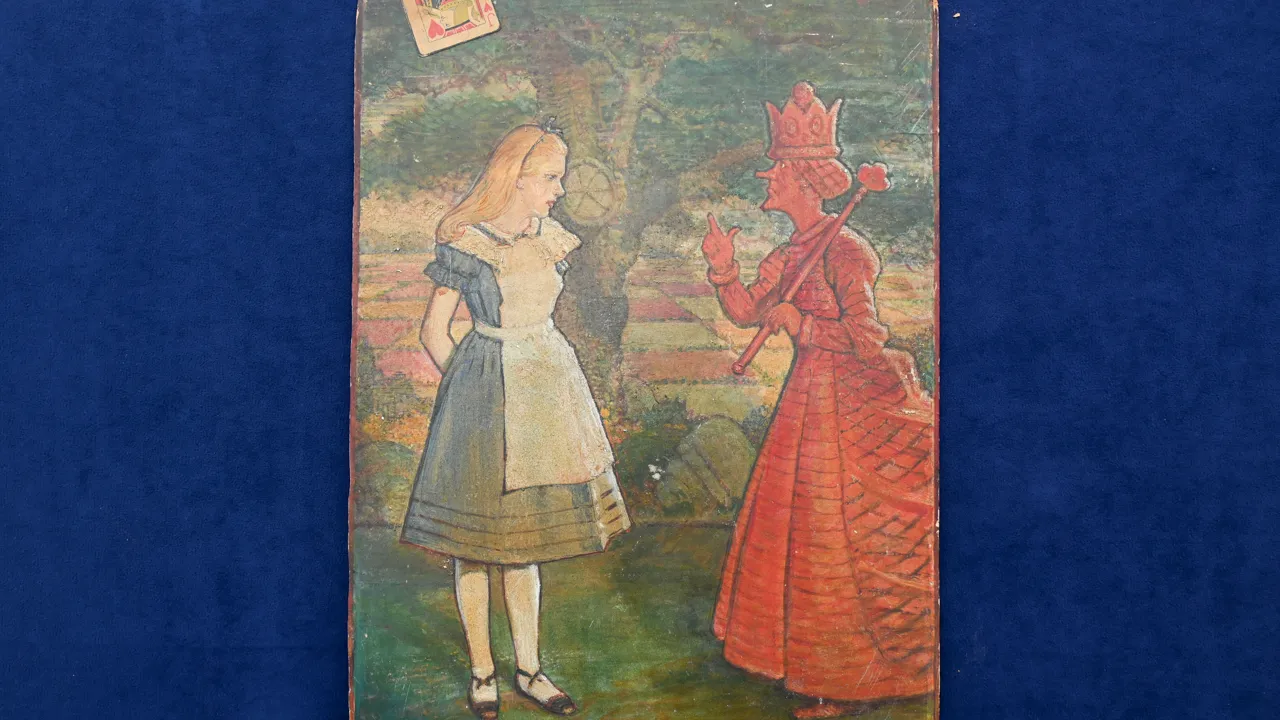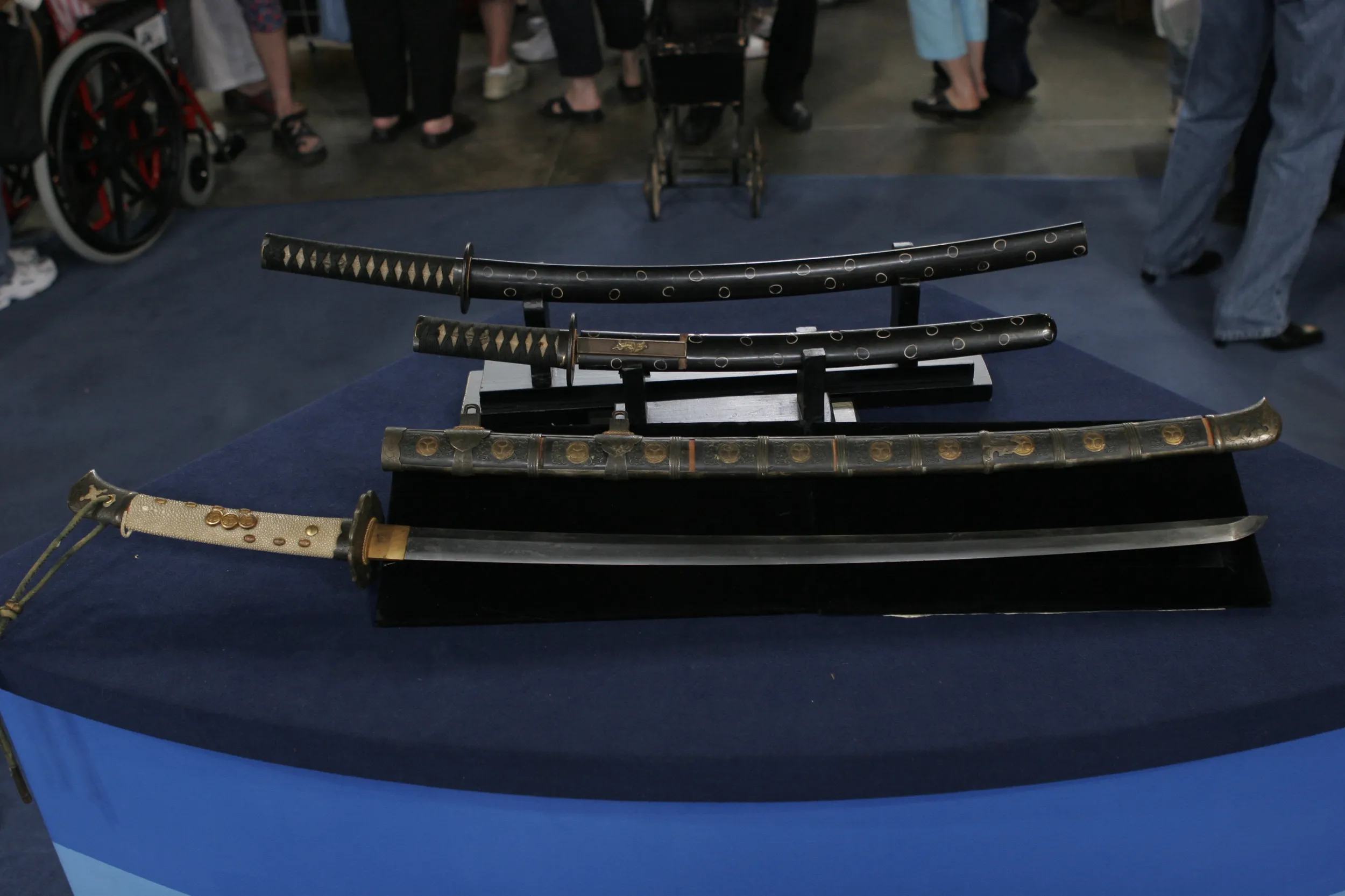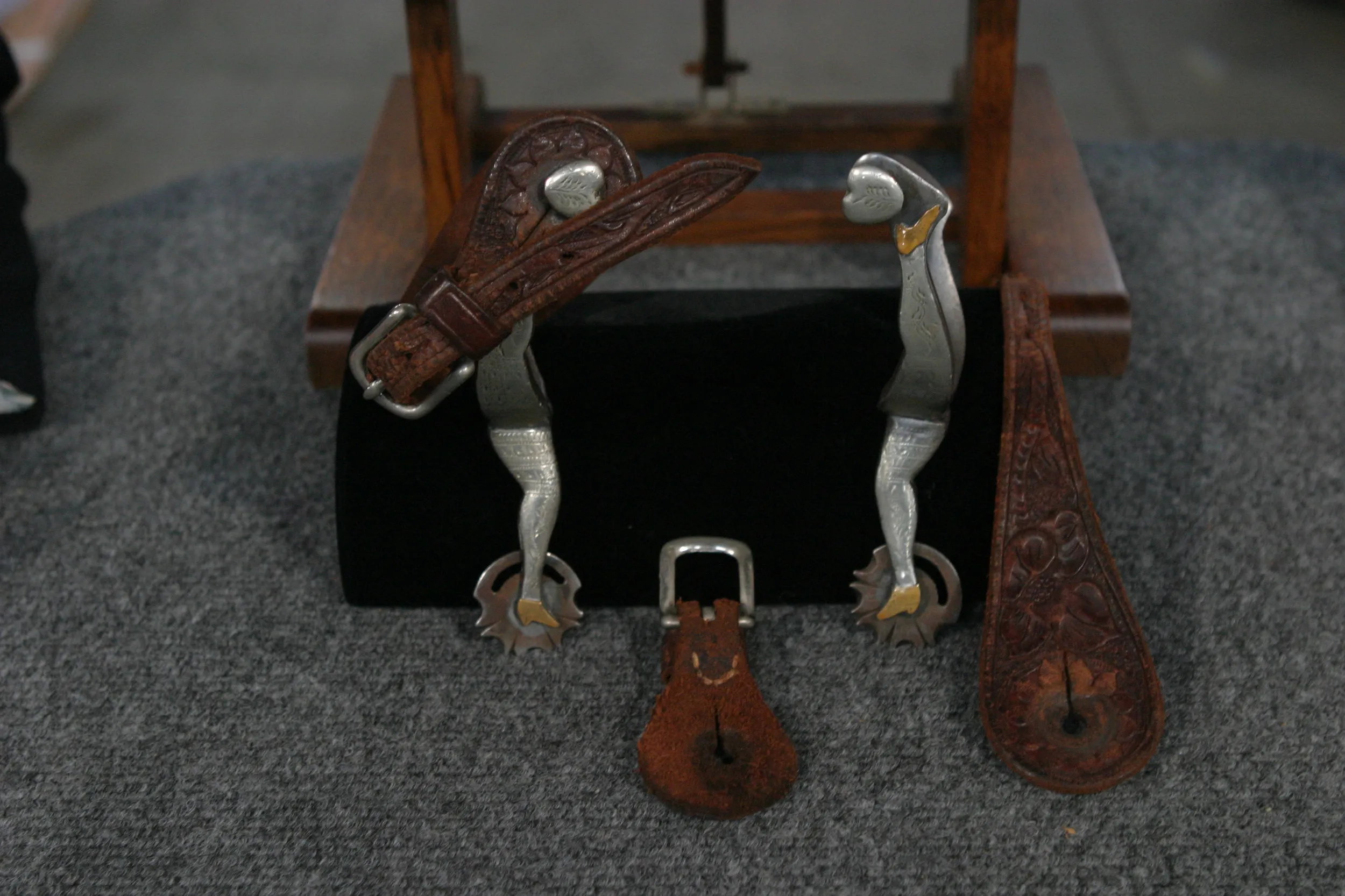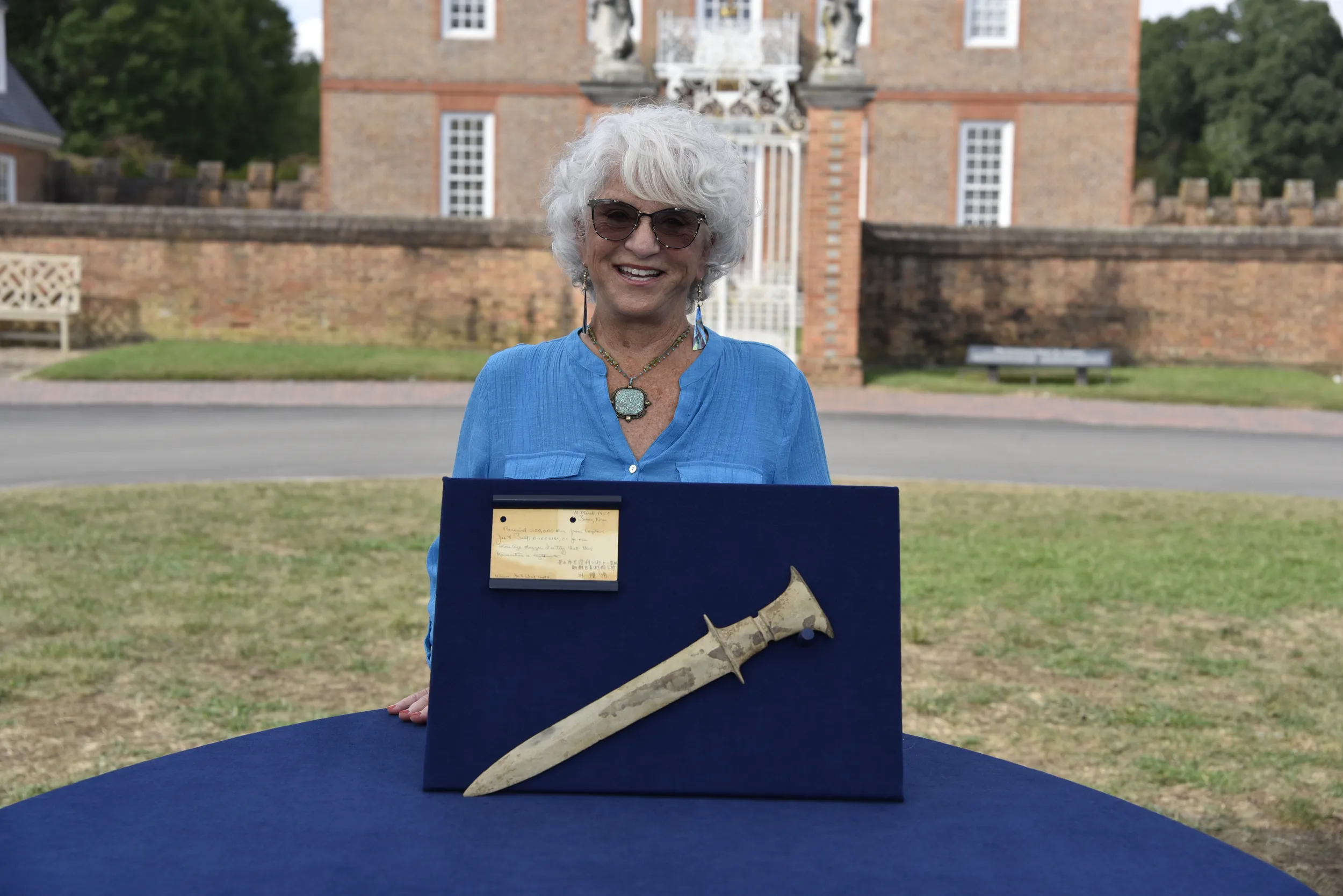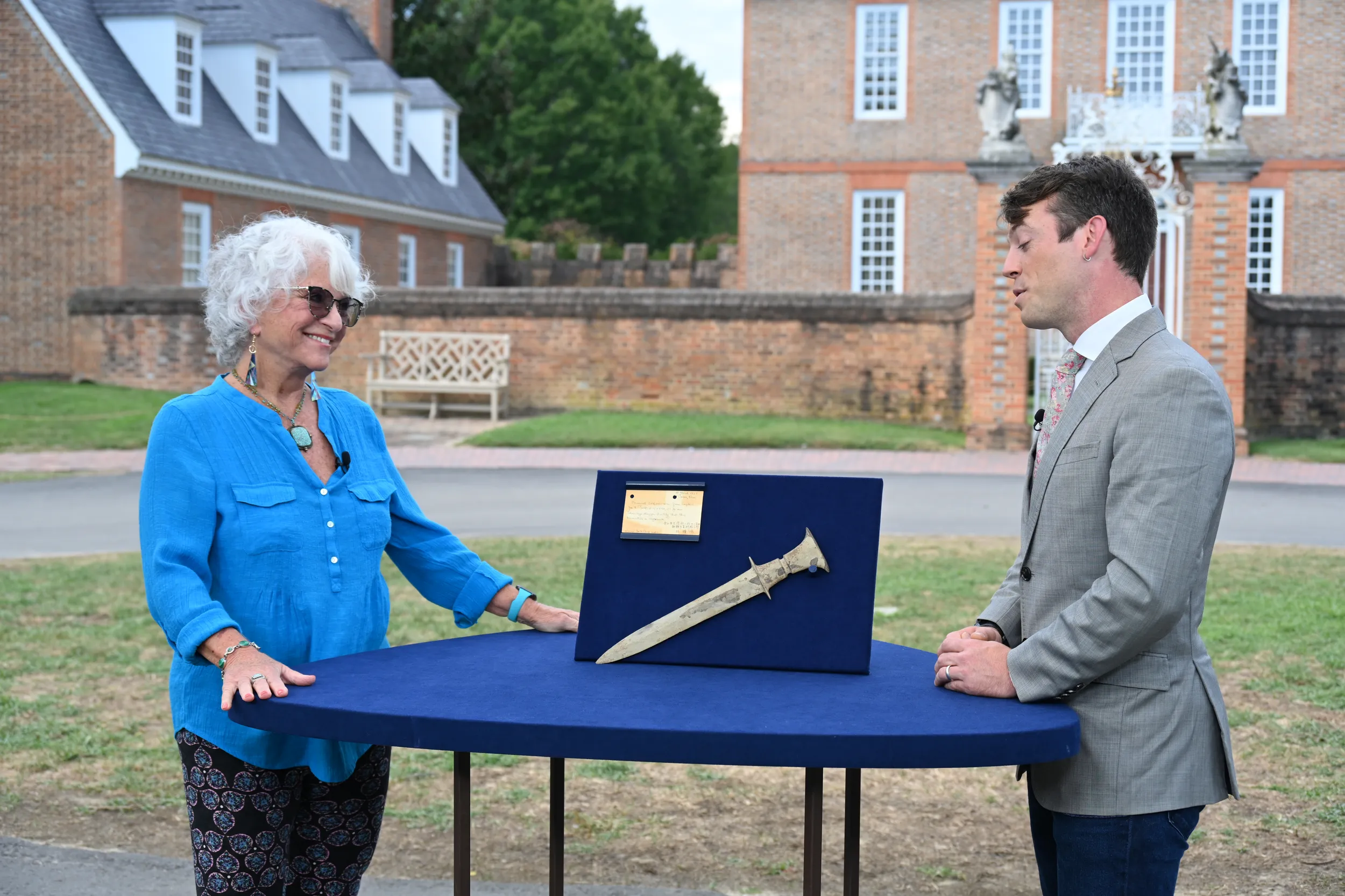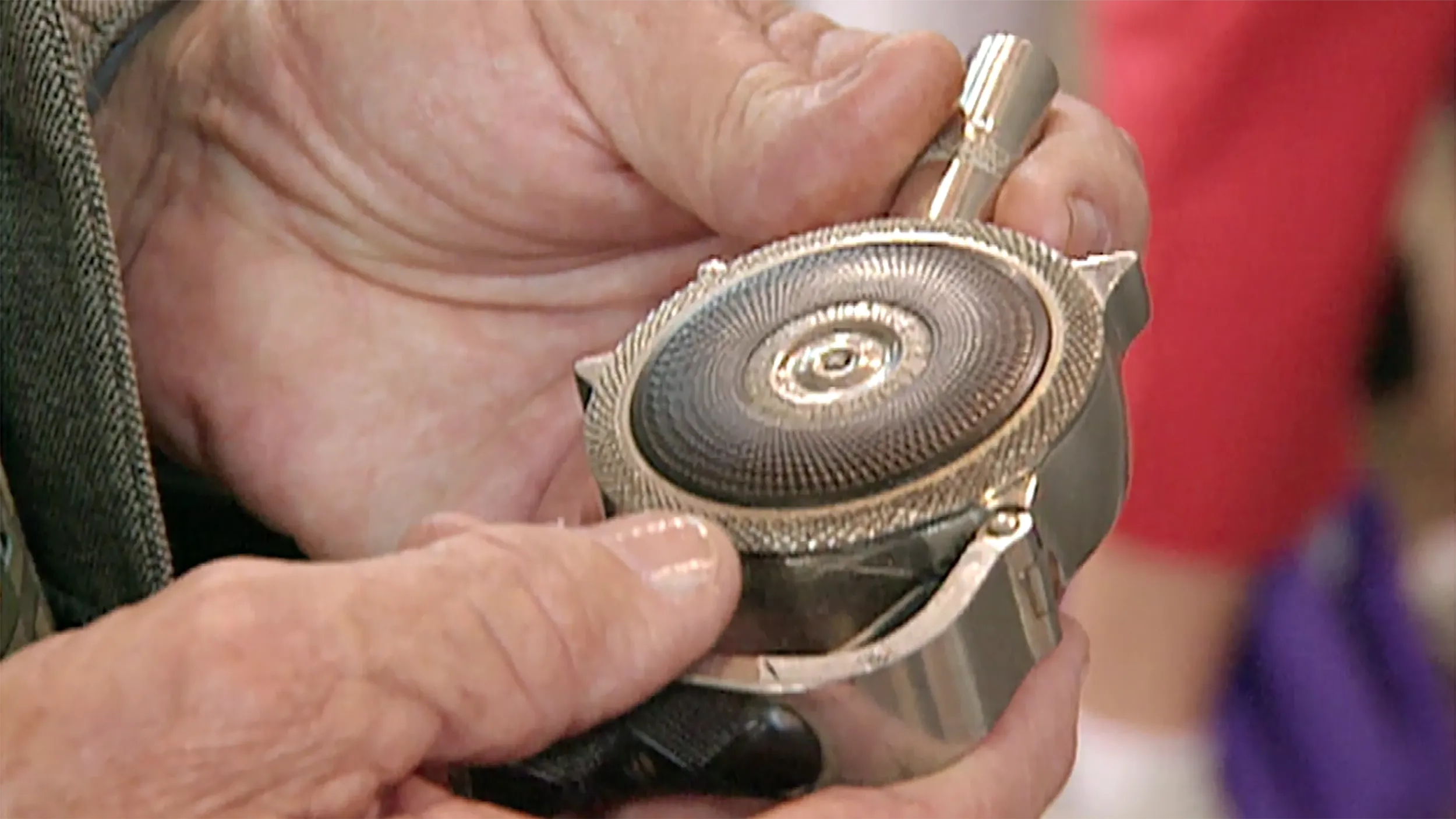GUEST: My sister and I have had this knife for many years. My stepfather was retired from the Navy and the Army, and when he was stationed in Korea in 1951, he purchased this dagger. He passed away in 1985. Since 1987, it has been sitting on a shelf in either my house or my sister's house.
APPRAISER: It is Korean. It was purchased in Busan, Korea, according to the tag, which is in South Korea and right along the coast. These daggers-- there are other versions of them-- uh, primarily were brought up from tomb sites from tombs in Korea, but also in Japan, where Japan and Korea are closest to one another, primarily in Fukuoka, which is a coastal city in Japan. The daggers are based on Chinese bronze forms, but it's not bronze-- it's stone. It's slate. They were based on Zhou Dynasty Chinese bronze daggers, which is roughly from the 11th century to the third century B.C.
GUEST: Gosh (chuckles)
APPRAISER: How old do you think this dagger is?
GUEST: In any minor research that I did, I was thinking between 500 and 700 B.C.
APPRAISER: You are exactly right, almost right on the money.
GUEST: Get out!
APPRAISER: So it's from a people, they were called the Yayoi people. They were an ethnic group that were in the Korean peninsula and traveled to Japan. The Yayoi people were copying the Chinese bronze daggers and swords and making them in stone, because they didn't yet have bronze. This dagger is so finely crafted, the recessed areas right here, the raised bands...
GUEST: Uh-huh.
APPRAISER: ...would have taken a craftsman a huge amount of time to make. It still retains some of the original surface, and if you touch it, it's silky smooth. Exactly as it would have been when it first was made. The edges of the dagger are still sharp! And a lot of these are broken. But I examined yours and it's not-- it's complete. I don't think that yours would have been utilitarian.
GUEST: Okay.
APPRAISER: It's too finely crafted. I believe that this was more likely something that was for ceremonial purposes, which would explain why it is in such a, such great condition. And it makes sense that it was purchased in Busan, and likely was brought up from a tomb site around there, which, during the 1930s and 1940s, Japanese were in Korea, and they loved Korean artifacts. So they were having tomb sites dug up. Dolmens, which are the raised tombs, were opened up and the artifacts were brought out. Daggers like these would have been brought out at that time. 1950s, after the Japanese were defeated, the antique sellers in Korea, many of them were the fellows who had been digging the graves during the '30s and '40s. They knew where to find things, they found them, and they had a ready market in the American military officers who wanted to bring back a piece of history. I think this one would have been from the Yayoi people in Korea. Gojoseon period, 1000 B.C. to about 500 B.C.
GUEST: Whoa.
APPRAISER: What do you think it's worth?
GUEST: $5,000.
APPRAISER: Okay, objects like this are extremely rare. The sale of Korean objects that were brought out during World War II, at this time, there are no real rules or regulations that would stop you from selling it, were that to be what you wanted to do. This was brought out of Korea at an appropriate time. There are difficulties in other areas, repatriation of objects, mostly from the Middle East, war-torn regions, but also in America, with Native American tomb sites that were dug up and the objects were taken out. So it's good to do your research and make sure that everything is proper. There are similar examples of this, more plain, damaged, that sell for about $5,000.
GUEST: Okay.
APPRAISER: I think it is likely that your dagger, were it to go to auction, would sell for between $20,000 and $30,000.
GUEST: Holy... Oh, my God. (inhales) Nah, come on. Seriously?
APPRAISER: Seriously.
GUEST: Whoa. I'm thrilled. My sister is going to be thrilled. (breathes deeply) Thank you.
APPRAISER: If you have an insurance agent, I would call them and ask them to add a $50,000... Maybe more, $60,000, uh...
GUEST: Okay.
APPRAISER: ...price tag onto this fellow.
GUEST: I'm thinking of the stepfather, who was not a favorite of mine, and now has become one. (chuckles)

